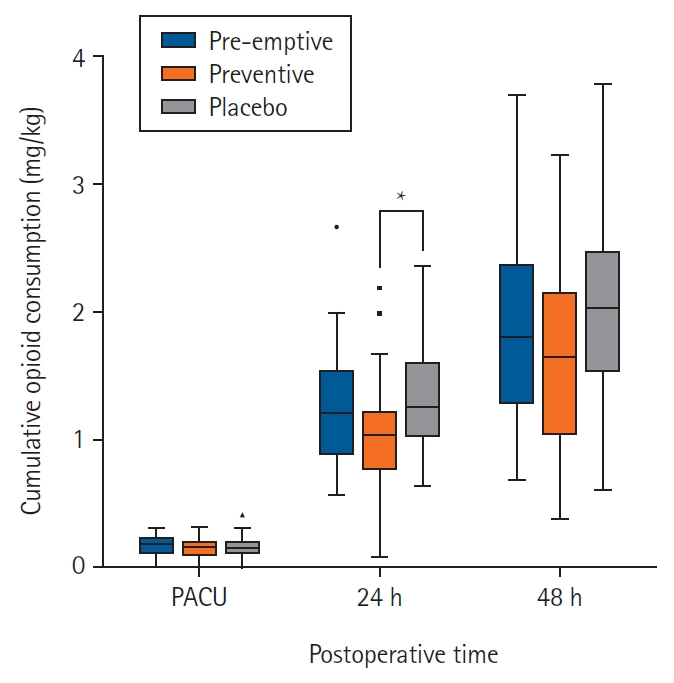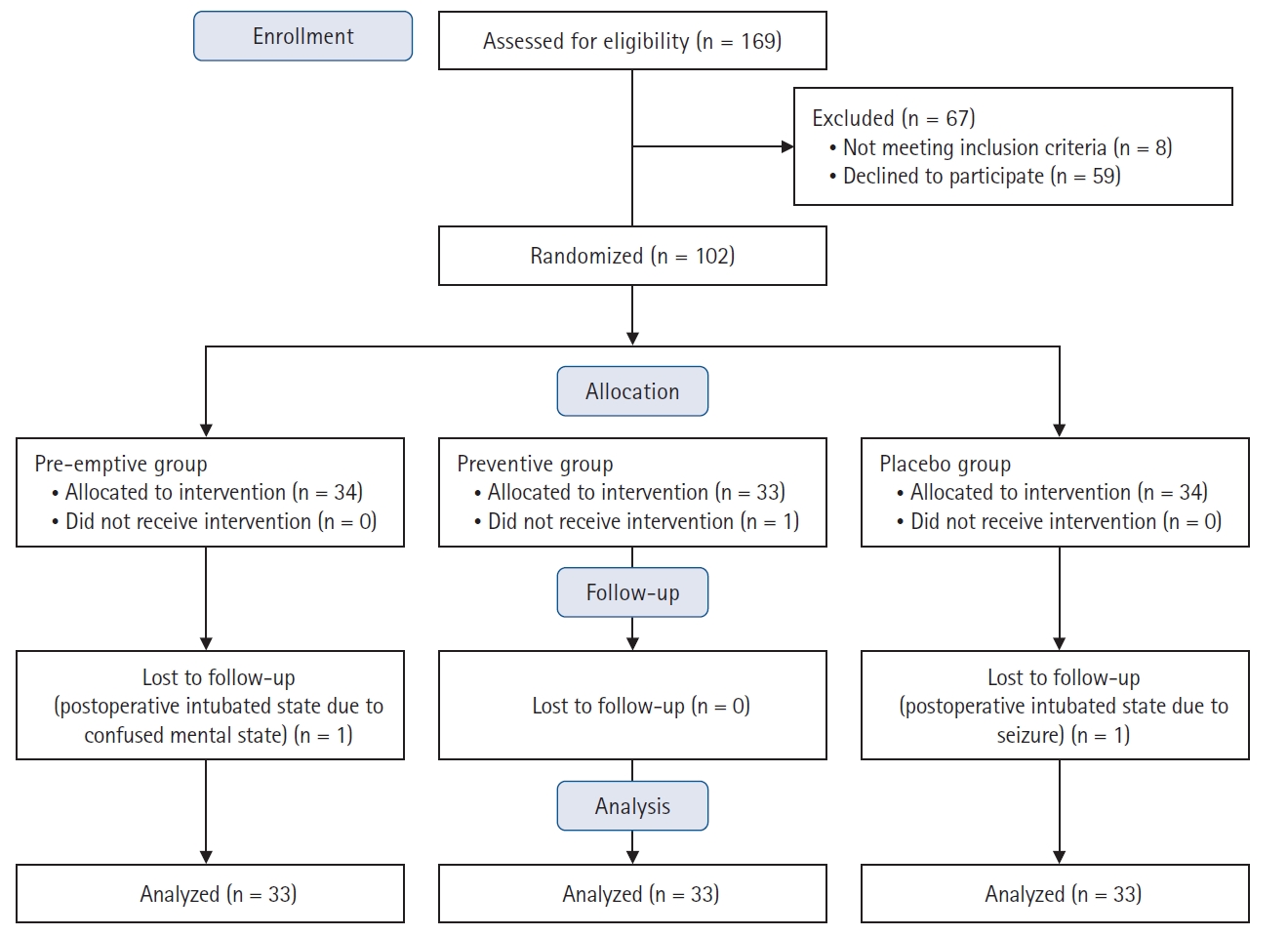4. Shastri N. Intravenous acetaminophen use in pediatrics. Pediatr Emerg Care 2015; 31: 444-8.


5. Chidambaran V, Sadhasivam S. Pediatric acute and surgical pain management: recent advances and future perspectives. Int Anesthesiol Clin 2012; 50: 66-82.


7. Hiller A, Helenius I, Nurmi E, Neuvonen PJ, Kaukonen M, Hartikainen T, et al. Acetaminophen improves analgesia but does not reduce opioid requirement after major spine surgery in children and adolescents. Spine (Phila Pa 1976) 2012; 37: E1225-31.


9. Mac TB, Girard F, Chouinard P, Boudreault D, Lafontaine ER, Ruel M, et al. Acetaminophen decreases early post-thoracotomy ipsilateral shoulder pain in patients with thoracic epidural analgesia: a double-blind placebo-controlled study. J Cardiothorac Vasc Anesth 2005; 19: 475-8.


10. Khalili G, Janghorbani M, Saryazdi H, Emaminejad A. Effect of preemptive and preventive acetaminophen on postoperative pain score: a randomized, double-blind trial of patients undergoing lower extremity surgery. J Clin Anesth 2013; 25: 188-92.


11. Doleman B, Read D, Lund JN, Williams JP. Preventive acetaminophen reduces postoperative opioid consumption, vomiting, and pain scores after surgery: systematic review and meta-analysis. Reg Anesth Pain Med 2015; 40: 706-12.


12. McPherson ML. Demystifying opioid conversion calculations: a guide for effective dosing. Bethesda, American Society of Health-System Pharmacists. 2000, pp 55-81.

13. Yoon S, Joo H, Oh YM, Lee J, Bahk JH, Lee HJ. Validation and clinical utility of the Korean version of the Quality of Recovery-15 with enhanced recovery after surgery: a prospective observational cohort study. Br J Anaesth 2020; 125: 614-21.


14. Laigaard J, Pedersen C, R├Ėnsbo TN, Mathiesen O, Karlsen AP. Minimal clinically important differences in randomised clinical trials on pain management after total hip and knee arthroplasty: a systematic review. Br J Anaesth 2021; 126: 1029-37.


16. Peduto VA, Ballabio M, Stefanini S. Efficacy of propacetamol in the treatment of postoperative pain. Morphine-sparing effect in orthopedic surgery. Italian Collaborative Group on Propacetamol. Acta Anaesthesiol Scand 1998; 42: 293-8.


17. Granry JC, Rod B, Monrigal JP, Merckx J, Berniere J, Jean N, et al. The analgesic efficacy of an injectable prodrug of acetaminophen in children after orthopaedic surgery. Paediatr Anaesth 1997; 7: 445-9.


18. Anderson BJ. Paracetamol (Acetaminophen): mechanisms of action. Paediatr Anaesth 2008; 18: 915-21.


19. Smith HS. Potential analgesic mechanisms of acetaminophen. Pain physician 2009; 12: 269-80.


20. McDonald J, Lambert DG. Opioid mechanisms and opioid drugs. Anaesth Intensive Care Med 2008; 9: 33-7.

22. Singla NK, Parulan C, Samson R, Hutchinson J, Bushnell R, Beja EG, et al. Plasma and cerebrospinal fluid pharmacokinetic parameters after single-dose administration of intravenous, oral, or rectal acetaminophen. Pain Pract 2012; 12: 523-32.


23. Capici F, Ingelmo PM, Davidson A, Sacchi CA, Milan B, Sperti LR, et al. Randomized controlled trial of duration of analgesia following intravenous or rectal acetaminophen after adenotonsillectomy in children. Br J Anaesth 2008; 100: 251-5.


24. Schnitzer T. The new analgesic combination tramadol/acetaminophen. Eur J Anaesthesiol Suppl 2003; 28: 13-7.

25. Bozkurt P. Use of tramadol in children. Paediatr Anaesth 2005; 15: 1041-7.


26. Hardalo C, Peake J, Royal M, Breitmeyer J. Intravenous acetaminophen (IV APAP) safety profile: 7 years of international post-marketing experience. In: Critical care medicine. Philadelphia, Lippincott williams & Wilkins. 2009, pp A433-A.













